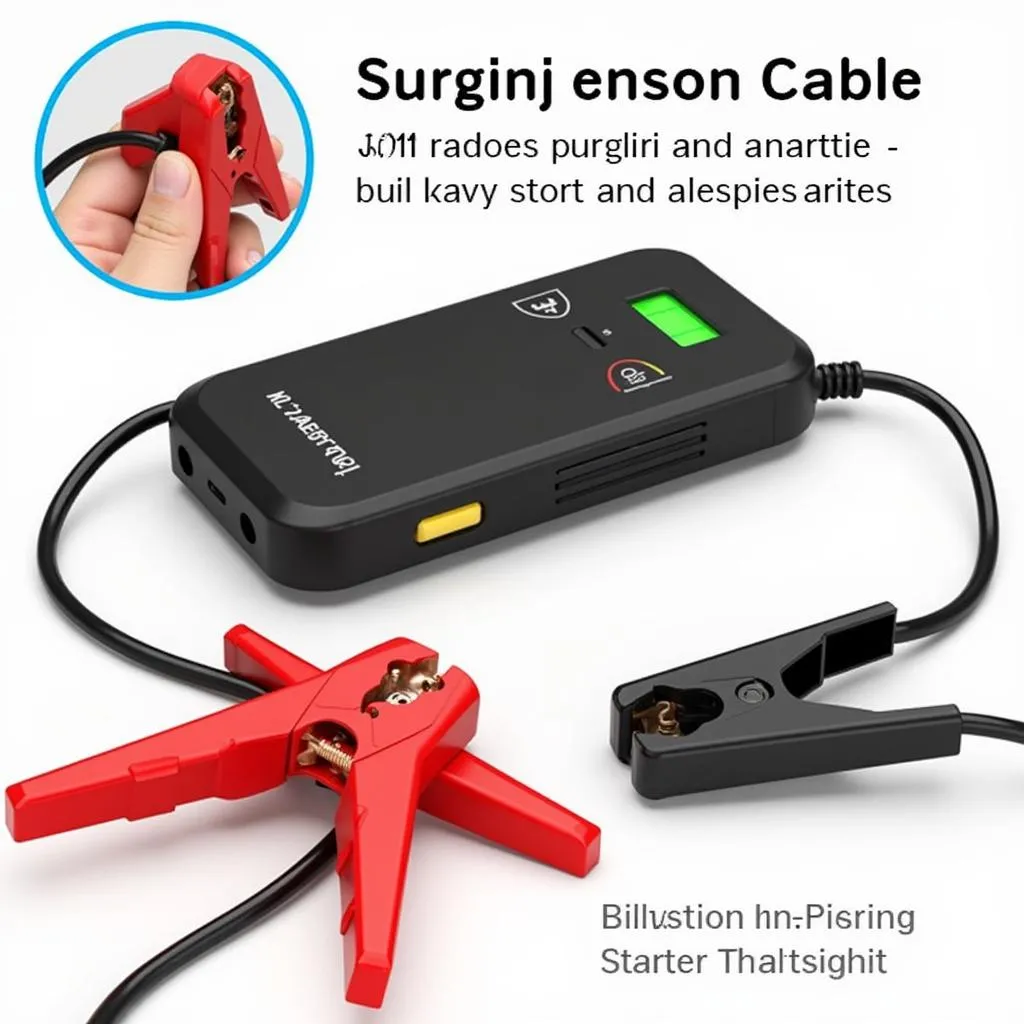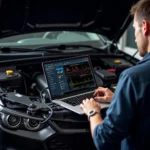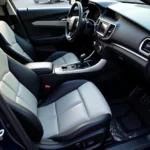A dead car battery can ruin your day, especially if you’re miles from civilization. That’s where a portable battery charger for car comes in. These compact powerhouses can jump-start your vehicle and even charge your electronics, providing peace of mind on the road. But with so many options available, choosing the right one can feel overwhelming. This guide will explore everything you need to know about portable car battery chargers, empowering you to make an informed decision.
Why You Need a Portable Battery Charger for Car
Imagine this: you’re on a scenic road trip, enjoying breathtaking views and the open road. You pull over for a quick photo op, turn off the engine, and soak in the scenery. But when you try to start your car again…nothing. Dead battery. A portable car battery charger can save you from this nightmare scenario.
Here’s why it’s a must-have for every car owner:
- Emergency Jump Starts: The most obvious benefit is the ability to jump-start your car without relying on another vehicle. This is especially crucial in remote areas or during emergencies.
- Convenience: No need to flag down strangers for a jump. Simply connect the charger and you’re back on the road in minutes.
- Multi-Functionality: Many portable car battery chargers double as power banks for your smartphones, tablets, and other devices.
- Safety: These chargers are designed with safety features to prevent sparks, short circuits, and reverse polarity, making them safe for anyone to use.
- Compact and Portable: Their compact size allows you to store them easily in your trunk or even your glove compartment.
Types of Portable Car Battery Chargers
There are two main types of portable car battery chargers to consider:
1. Lithium-ion Jump Starters
These are the most common and popular type. They are:
- Lightweight and compact: Making them easy to handle and store.
- Powerful: They deliver high amperage for quick jump starts.
- Versatile: Often equipped with USB ports for charging electronics.
- Longer lifespan: They can handle hundreds of charge cycles.
2. Lead-Acid Jump Starters
These are the traditional type, similar to a smaller version of a regular car battery.
- More affordable: Compared to lithium-ion options.
- Bulkier and heavier: Making them less portable.
- Shorter lifespan: They require more maintenance and have a shorter lifespan than lithium-ion.
Key Features to Consider
When choosing a portable battery charger for your car, consider these essential features:
1. Peak Amperage and Cranking Amps
- Peak Amps: The maximum current the charger can deliver in a short burst. This determines how effectively it can jump-start your vehicle.
- Cranking Amps (CA): The amount of current the charger can deliver for an extended period. Higher CA is essential for starting larger engines.
Choose a charger with enough amperage to start your vehicle’s engine size. Check your car’s manual for the recommended amperage.
2. Battery Capacity
Measured in amp-hours (Ah) or milliamp-hours (mAh), this determines how much charge the portable battery holds.
- Higher capacity: Ideal for multiple jump starts or charging devices on the go.
- Lower capacity: Suitable for occasional jump starts and smaller devices.
3. Safety Features
Safety is paramount when dealing with electrical components. Look for these safety features:
- Overcharge protection: Prevents damage to the charger and your car’s battery.
- Reverse polarity protection: Guards against connecting the charger incorrectly.
- Short circuit protection: Prevents damage in case of a short circuit.
- Spark-proof technology: Minimizes the risk of sparks during connection.
4. Additional Features
- Built-in LED light: Useful for nighttime emergencies or working in low-light conditions.
- USB ports: Allow you to charge smartphones, tablets, and other devices.
- AC outlet: Some high-end models offer AC outlets for powering small appliances.
- Air compressor: Convenient for inflating tires.
How to Use a Portable Battery Charger for Car Safely
Using a portable car battery charger is generally straightforward, but it’s crucial to follow safety precautions:
- Read the manual: Familiarize yourself with the specific instructions for your charger model.
- Park on a level surface: Ensure the car is in “Park” or “Neutral” and the parking brake is engaged.
- Turn off all accessories: Lights, radio, and anything else drawing power should be switched off.
- Connect the positive (red) clamp: Attach it to the positive (+) terminal of your car battery.
- Connect the negative (black) clamp: Attach it to a metal grounding point on the vehicle’s frame, away from the battery.
- Turn on the charger (if required): Some models require you to switch them on before jump-starting.
- Start the vehicle: Attempt to start your car. If it doesn’t start immediately, wait a few minutes and try again.
- Disconnect the clamps: Once the car starts, disconnect the clamps in reverse order (negative first, then positive).
Maintaining Your Portable Car Battery Charger
Proper maintenance can prolong the life of your portable battery charger:
- Recharge regularly: Even if you don’t use it often, recharge the charger every few months to keep the battery healthy.
- Store in a cool, dry place: Extreme temperatures can damage the battery.
- Clean the clamps: Corrosion on the clamps can hinder performance. Clean them with a wire brush and a baking soda solution.
- Inspect regularly: Check the charger, cables, and clamps for any signs of damage.
Choosing the Right Portable Battery Charger for You
With countless options on the market, selecting the right portable battery charger for car can seem daunting. Consider these factors:
- Vehicle type: The size and engine of your vehicle determine the amperage and capacity you need.
- Budget: Lithium-ion chargers are pricier but offer better performance and longevity.
- Usage: Occasional users might find a basic model sufficient, while frequent travelers might benefit from more features and capacity.
- Brand reputation: Choose a reputable brand known for quality and reliability.
FAQs About Portable Battery Chargers for Car
Here are answers to some commonly asked questions:
Q: How long does it take to charge a car battery with a portable charger?
A: Jump-starting usually takes a few minutes. However, fully charging a dead battery with a portable charger is not recommended and may take several hours, depending on the charger and battery capacity.
Q: Can I use a portable car battery charger on a motorcycle?
A: Yes, but ensure the charger has a mode specifically designed for motorcycles or smaller batteries to prevent damage.
Q: How long do portable car battery chargers last?
A: Lithium-ion chargers typically last for several years and hundreds of charge cycles with proper care.
Q: Can I take a portable car battery charger on an airplane?
A: Airline regulations vary, but most restrict or prohibit lithium-ion batteries exceeding a certain capacity. Check with your airline before traveling.
Conclusion
A portable battery charger for car is an indispensable tool for any car owner. It provides peace of mind on the road, ensuring you’re never stranded with a dead battery. By understanding the different types, features, and safety precautions, you can choose the best portable charger to meet your needs and enjoy worry-free driving. Remember to prioritize safety and always consult your car and charger manuals for specific instructions.
Are you ready to experience the convenience and security of a portable car battery charger?
When you need assistance, please contact us via WhatsApp: +1(641)206-8880, Email: cardiagtechworkshop@gmail.com Or visit us at: 276 Reock St, City of Orange, NJ 07050, United States. Our customer service team is available 24/7.



